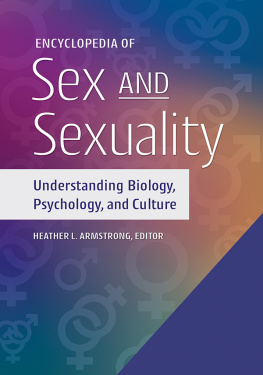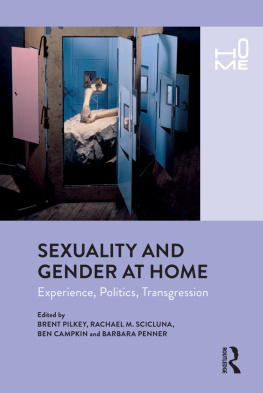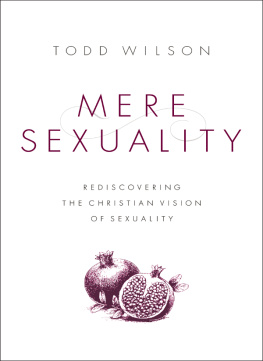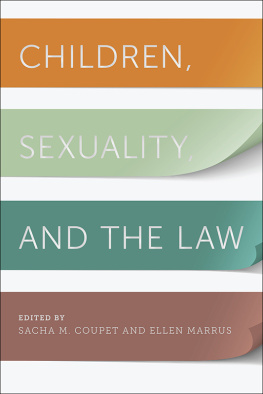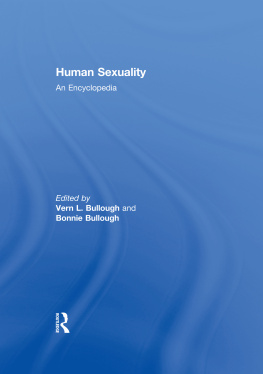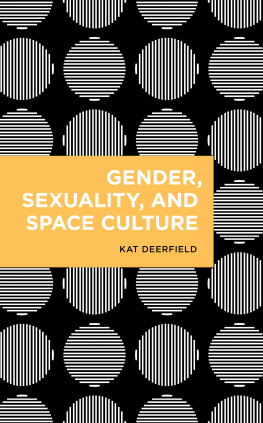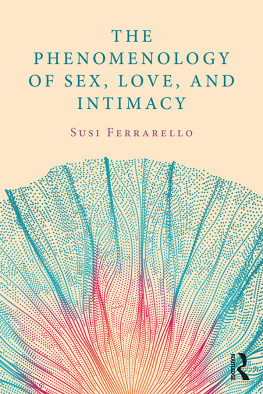Encyclopedia of Sex and Sexuality
Copyright 2021 by ABC-CLIO, LLC
All rights reserved. No part of this publication may be reproduced, stored in a retrieval system, or transmitted, in any form or by any means, electronic, mechanical, photocopying, recording, or otherwise, except for the inclusion of brief quotations in a review, without prior permission in writing from the publisher.
Library of Congress Cataloging-in-Publication Data
Names: Armstrong, Heather L., editor.
Title: Encyclopedia of sex and sexuality : understanding biology, psychology, and culture / Heather L. Armstrong, editor.
Description: Santa Barbara, California : Greenwood, [2021] | Includes bibliographical references and index. |
Identifiers: LCCN 2020024424 (print) | LCCN 2020024425 (ebook) | ISBN 9781440847684 (v. 1 ; hardcover ; alk. paper) | ISBN 9781440847691 (v. 2 ; hardcover ; alk. paper) | ISBN 9781610698740 (set ; hardcover ; alk. paper) | ISBN 9781610698757 (ebook)
Subjects: LCSH: SexEncyclopedias. | Sex (Biology)Encyclopedias. | Sex (Psychology)Encyclopedias.
Classification: LCC HQ21 .E647 2021 (print) | LCC HQ21 (ebook) | DDC 306.703dc23
LC record available at https://lccn.loc.gov/2020024424
LC ebook record available at https://lccn.loc.gov/2020024425
ISBN: 978-1-61069-874-0 (set)
978-1-4408-4768-4 (vol. 1)
978-1-4408-4769-1 (vol. 2)
978-1-61069-875-7 (ebook)
252423222112345
This book is also available as an eBook.
Greenwood
An Imprint of ABC-CLIO, LLC
ABC-CLIO, LLC
147 Castilian Drive
Santa Barbara, California 93117
www.abc-clio.com
This book is printed on acid-free paper 
Manufactured in the United States of America
For the curious.
Contents
Entries
Sex is a funny thing. In some ways, its everywhere. We see it in the media, in advertisements, in movies and TV shows, and in the headlines of many newspapers and magazines. Comedians joke about it, as do most of us with our friends and partners. With the explosion of the internet, sexual imagery is just a click away, and an available sexual partner can be found within seconds with just a swipe on an app. Sex is seemingly all around us, but how much do we really know about it?
When I began studying sex as an undergraduate student, I was fascinated by the juxtaposition of how something could simultaneously be all around us, and (supposedly) something that nearly everyone desires, yet still be something that felt taboo and sometimes shameful. Everyone has some kind of relationship with sex, even those of us who have never had sex or who dont desire sex. Because of this, I believe that it is every individuals right to be accurately informed about sex, sexual health, and sexuality. It is by having this scientific and accurate information that people can make the best choices for their own sexual health and well-being.
Unfortunately, sex education is often woefully lacking, if it even occurs at all. Because of this, rumors circulate about how sex is supposed to be, and many of us rely on things we hear from peers and the media and from what we see on TV, in the movies, and online. As Im sure you well know, these are rarely accurate sources of information. As a result, sexual myths and sexual double standards begin to be believed as fact, and this, coupled with a lack of accurate, science-based sexual education, often means that people are unsure and misinformed, which can lead to sexual shame, guilt, and dysfunction. The good news is that often, just by learning more about sex, sexuality, and sexual health, these problems and difficulties can be improved if not fixed completely.
So, this encyclopedia is for every person of every sex, gender, orientation, preference, and everything in between. In over 460 entries, written by nearly 150 sexuality experts, these volumes aim to provide a brief introduction and summary to a wide variety of topics related to sexuality. The authors present an overview of the latest research representing the current evidence-based understanding of the area. In addition, at the end of each entry, you will find a section with suggestions for further readings. Some of these are academic articles, others are books or websites, so it is hoped that these resources will be accessible to a variety of readers. That said, our understanding of sexuality has changed drastically in the past few decades, and new research and theories are continuously developed. As such, new information that was not available at the time this book was written will continue to be produced, so anyone with a particular interest should continue to explore the state of the science beyond these pages.
As with all encyclopedias, these volumes were not written to be read cover to cover but rather to provide a general overview on a wide variety of topics related to sexuality. Some topics are biological, others are psychological, some are behavioral, and others are social and cultural. Sex can be good, but it can also be bad, and sometimes it can be both at the same time. To reflect this, entries include both positive and negative aspects of sex and sexuality.
The scope of human sexuality is infinite, so inevitably some things will be missing from these volumes, but I hope that we have covered a sufficiently broad range of topics so that everyone who is studyingor just as importantly, everyone who is even slightly curious aboutsex will find something of interest and maybe even learn something new about this sometimes taboo, but deeply integral, part of who we are as human beings.
Heather L. Armstrong, PhD
A
Voluntary termination of a pregnancy without a medical necessity is considered an elective abortion. The National Abortion Federation (NAF) states that half of all pregnancies in the United States are unintended, and about half of these (1.3 million) are terminated through an elective abortion. The Guttmacher Institute estimates that 35 percent of all women of reproductive age in the United States will have an abortion by the time they reach the age of forty-five. About 19 percent of these are elected by women between the ages of fifteen and nineteen, while 33 percent of elective abortions are performed on women between twenty and twenty-four years old. Women thirty years and older account for 25 percent of all abortions.
Most women who seek elective abortion are unmarried. The NAF reports that the majority of women who choose to abort a pregnancy do so for economic reasonseither because of a lack of adequate income to start a family or the inability to support more children. Women also seek abortion when pregnancy causes significant medical complications or when they discover that their child will have severe birth defects that will compromise its life. Roughly 13,000 women each year choose abortion because they have become pregnant as a result of rape or incest.
Abortions are performed around the world, with varying degrees of regulation and standards for safety. In the United States, abortion laws went into effect by state beginning in 1821, when Connecticut passed the first law banning the practice. The Roman Catholic Church declared its prohibition of any kind of abortion in 1869, driving further bans on the practice around the world. By 1900, every state in the United States had some form of antiabortion law.
Originally, these laws had some basis in practicality. Like all surgeries performed before antiseptic procedures became widespread, abortions could be dangerous for the patient, frequently leading to infections, sepsis, and death. Surgeries became far safer in the early to mid-1900s, but by this time abortion had become a moral issue rather than a medical one. Women had to seek the procedures in secret, often from people who were not medical professionals. Deaths from back-alley abortions were common well into the second half of the twentieth century.

